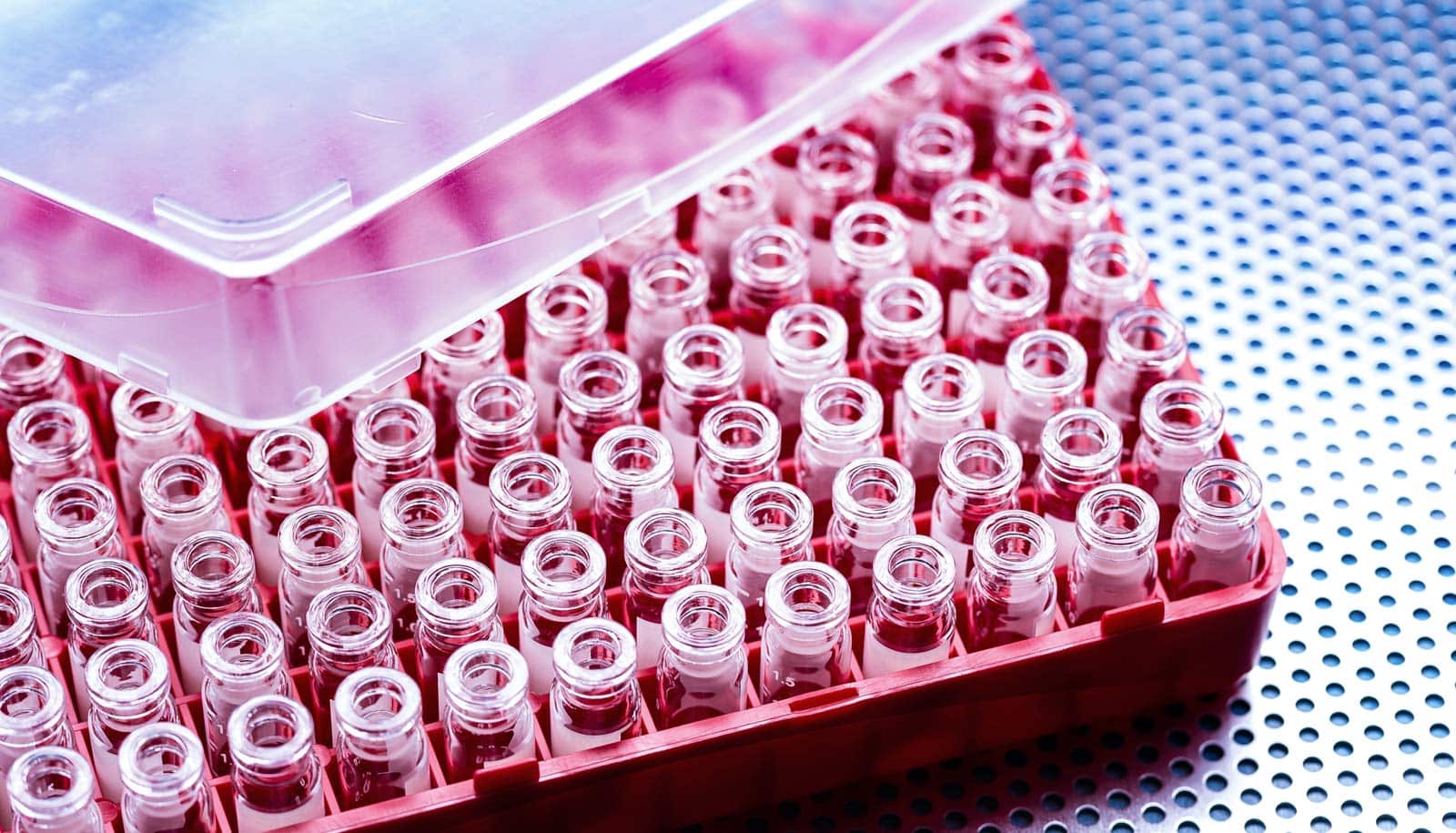Scientists have discovered a potential way to stave off the detrimental effects of aging, according to their research in mice.
The study suggests that a protein that is abundant in the blood of young mice plays a vital role in keeping them healthy. With age, levels of this protein decline in mice and people, while health problems such as insulin resistance, weight gain, cognitive decline, and vision loss increase.
Supplementing older mice with the protein obtained from younger mice appears to slow this decline in health and extend the life spans of older mice by about 16 percent.
“We have found a totally new pathway toward healthy aging.”
As reported in Cell Metabolism, the circulating protein, an enzyme called eNAMPT, is known to orchestrate a key step in the process cells use to make energy. With age, the body’s cells become less and less efficient at producing this fuel—called NAD—necessary to keep the body healthy.
Researchers showed that supplementing eNAMPT in older mice with that of younger mice appears to be one route to boosting NAD fuel production and keeping aging at bay.
More activity, better sleep
“We have found a totally new pathway toward healthy aging,” says senior author Shin-ichiro Imai, a professor of developmental biology at Washington University in St. Louis. “That we can take eNAMPT from the blood of young mice and give it to older mice and see that the older mice show marked improvements in health—including increased physical activity and better sleep—is remarkable.”
Imai has long studied aging, using mice as stand-ins for people. Unlike other studies focused on transfusing whole blood from young mice to old mice, Imai’s group increased levels of a single blood component, eNAMPT, and showed its far-reaching effects, including improved insulin production, sleep quality, function of photoreceptors in the eye, and cognitive function in performance on memory tests, as well as increased running on a wheel.
The researchers also showed other ways to boost NAD levels in tissues throughout the body. Most notably, the researchers have studied the effects of giving oral doses of a molecule called NMN, the chemical eNAMPT produces. Researchers are testing NMN in human clinical trials.
“We think the body has so many redundant systems to maintain proper NAD levels because it is so important,” Imai says. “Our work and others’ suggest it governs how long we live and how healthy we remain as we age. Since we know that NAD inevitably declines with age, whether in worms, fruit flies, mice, or people, many researchers are interested in finding anti-aging interventions that might maintain NAD levels as we get older.”
eNAMPT in action
Imai’s research shows that the hypothalamus is a major control center for aging throughout the body, directed in large part by eNAMPT, which releases into the blood from fat tissue. The hypothalamus governs vital processes such as body temperature, thirst, sleep, circadian rhythms, and hormone levels.
The researchers showed that the hypothalamus manufactures NAD using eNAMPT that makes its way to the brain through the bloodstream after its released from fat tissue. They also showed that small particles called extracellular vesicles carry eNAMPT. As levels of eNAMPT in the blood decline, the hypothalamus loses its ability to function properly, decreasing life span.
In an intriguing finding, Imai and first author Mitsukuni Yoshida, a doctoral student in Imai’s lab, showed that levels of eNAMPT in the blood highly correlate with the number of days the mice lived. More eNAMPT meant a longer life span, and less meant a shorter one.
The researchers also showed increased life span with delivering eNAMPT to normal old mice. All mice that received saline solution as a control had died before day 881, about 2.4 years. Of the mice that received eNAMPT, one is still alive as of this writing, surpassing 1,029 days, or about 2.8 years.
“We could predict, with surprising accuracy, how long mice would live based on their levels of circulating eNAMPT,” Imai says. “We don’t know yet if this association is present in people, but it does suggest that eNAMPT levels should be studied further to see if it could be used as a potential biomarker of aging.”
The study also found sex differences in levels of eNAMPT, with female mice consistently showing higher levels of the enzyme.
“We were surprised by the dramatic differences between the old mice that received the eNAMPT of young mice and old mice that received saline as a control,” Imai says. “These are old mice with no special genetic modifications, and when supplemented with eNAMPT, their wheel-running behaviors, sleep patterns and physical appearance—thicker, shinier fur, for example—resemble that of young mice.”
Imai and his colleagues note that extracellular vesicles in humans carry NAMPT and say future studies should investigate whether low levels associate with disease in aging people and whether supplementing eNAMPT in extracellular vesicles could serve as an anti-aging intervention in older people.
The National Institute on Aging, the American Federation for Aging Research, and the Tanaka Fund primarily supported the work.



